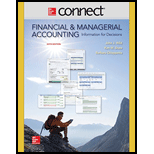
1.
1.
Explanation of Solution
Issue of bonds at discount on January 1, 2015
| Date | Account Title and Explanation | Post. Ref. |
Debit ($) |
Credit ($) |
|---|---|---|---|---|
| January 1 | Cash | 4,859,980 | ||
| Premium on bonds payable | 895,980 | |||
| Bonds payable | 4,000,000 | |||
| (To record the sold bonds at premium) |
Table (1)
• Cash account is the assets account. Since the cash is received, the value of assets is increased. So, debit the credit the cash account.
• Premium on bonds payable account is the liabilities account. Here, at the time of issue of the bonds premium has been given which increase the liabilities of the company. So, credit the premium on bonds payable account.
• Bonds payable account is the liabilities account. Bonds has been sold, which increases the liabilities of the company. So, credit the bonds payable account.
2.
Cash payment, straight line amortization and bonds interest expense.
2.
Explanation of Solution
(a)
Given,
Amount of bond is $4,000,000.
Rate of interest is 6%.
Time period is 0.5.
Formula to calculate the cash at the time of issue of bond:
Substitute $4,000,000 for the bond value, 6% for the rate on interest and 0.5 for time period,
Hence, cash payment account is $120,000.
(b)
Given,
Par value of bond is $4,000,000.
Issued
Number of semiannual period is 30.
Formula to calculate the straight line discount amortization:
Substitute $895,980 for the discount on bond and 30 for number of semiannual period,
Hence, amortization is $29,866.
Working note:
Calculation of discount on bond:
(c)
Given,
Cash payment is $120,000.
Amortization expense is $29,866.
Formula to calculate bonds interest payment expense:
Substitute $120,000 for cash payment and $29,866 for amortization,
Hence, bonds interest expense is $90,134.
3.
Total amount of interest payable on bond.
3.
Explanation of Solution
| Particulars | Amounts ($) |
|---|---|
| 30 Regular outlays of $120,000 | 3,600,000 |
| Par value at maturity | 4,000,000 |
| Net repaid | 7,600,000 |
| Less: Money borrowed | 4,895,980 |
| Bond interest expense | 2,704,020 |
Table (2)
Hence, total bond interest expense is $2,704,202.
4.
First two year of an amortization table.
4.
Explanation of Solution
| End of semiannual period | Unamortized Discount ($) |
Carrying value ($) |
|---|---|---|
| January 1, 2017 | 895,980 | 4,895,980 |
| June 30, 2017 | 866,114 | 4,866,114 |
| December 31, 2017 | 836,248 | 4,836,248 |
| June 30, 2018 | 806,382 | 4,806,382 |
| December 31, 2018 | 776,516 | 4,775,516 |
Table (3)
5.
Journal entry to record the first two interest payment.
5.
Explanation of Solution
Payment of interest on June 30, 2015
| Date | Account Title and Explanation | Post. Ref. |
Debit ($) |
Credit ($) |
|---|---|---|---|---|
| June 30 | Bonds interest expense | 90,134 | ||
| Premium on bonds payable | 29,866 | |||
| Cash | 120,000 | |||
| (To record the paid semiannual interest and record amortization) |
Table (4)
• Bonds interest account is an expense account. Interest has been paid by the company which increases the liabilities of the company. So, debit the bonds interest expense account.
• Premium on bonds payable account is the liabilities account. Here, at the time of issue of the bonds premium has been given which increases the liabilities of company. Now premium on bonds payable has been paid which decrease the liability. So, debit the premium on bonds payable account.
• Cash is an asset account. Since the cash is paid, the value of assets is decreased. So, credit the Cash account.
Payment of interest on December 31, 2015
| Date | Account Title and Explanation | Post. Ref. |
Debit ($) |
Credit ($) |
|---|---|---|---|---|
| Dec 31 | Bonds interest expense | 90,134 | ||
| Premium on bonds payable | 29,866 | |||
| Cash | 120,000 | |||
| (To record the paid semiannual interest and record amortization) |
Table (5)
• Bonds interest account is an expense account. Interest has been paid by the company which increases the liabilities of the company. So, debit the bonds interest expense account.
• Premium on bonds payable account is the liabilities account. Here, at the time of issue of the bonds premium has been given which increases the liabilities of company. Now premium on bonds payable has been paid which decrease the liability. So, debit the premium on bonds payable account.
• Cash is an asset account. Since the cash is paid, the value of assets is decreased. So, credit the cash account.
Want to see more full solutions like this?
Chapter 10 Solutions
Connect 2 Semester Access Card for Financial and Managerial Accounting
- Cheyenne Corporation purchased 400 shares of Sherman Inc. common stock for $12,900 (Cheyenne does not have significant influence). During the year, Sherman paid a cash dividend of $3.25 per share. At year-end, Sherman stock was selling for $37.00 per share. Prepare Cheyenne' journal entries to record (a) the purchase of the investment, (b) the dividends received, and (c) the fair value adjustment. (Assume a zero balance in the Fair Value Adjustment account.) (List all debit entries before credit entries. Credit account titles are automatically indented when amount is entered. Do not indent manually. If no entry is required, select "No Entry" for the account titles and enter O for the amounts.) No. Account Titles and Explanation (a) Debt Investments Cash (b) Cash Dividend Revenue (c) Fair Value Adjustment Unrealized Holding Gain or Loss - Income Debit Creditarrow_forwardCrane Corporation purchased 360 shares of Sherman Inc. common stock for $11,800 (Crane does not have significant influence). During the year, Sherman paid a cash dividend of $3.25 per share. At year-end, Sherman stock was selling for $34.50 per share. Prepare Crane' journal entries to record (a) the purchase of the investment, (b) the dividends received, and (c) the fair value adjustment. (Assume a zero balance in the Fair Value Adjustment account.) (List all debit entries before credit entries. Credit account titles are automatically indented when amount is entered. Do not indent manually. If no entry is required, select "No Entry" for the account titles and enter O for the amounts.) No. Account Titles and Explanation Debit Credit (a) (b) (c)arrow_forwardIndigo Corporation purchased trading investment bonds for $65,000 at par. At December 31, Indigo received annual interest of $2,600, and the fair value of the bonds was $62,200. Prepare Indigo' journal entries for (a) the purchase of the investment, (b) the interest received, and (c) the fair value adjustment. (Assume a zero balance in the Fair Value Adjustment account.) (List all debit entries before credit entries. Credit account titles are automatically indented when amount is entered. Do not indent manually. If no entry is required, select "No Entry" for the account titles and enter O for the amounts.) No. Account Titles and Explanation Debit Credit (a) (b) (c)arrow_forward
- Swifty Corporation purchased trading investment bonds for $40,000 at par. At December 31, Swifty received annual interest of $1,600, and the fair value of the bonds was $37,600. Prepare Swifty' journal entries for (a) the purchase of the investment, (b) the interest received, and (c) the fair value adjustment. (Assume a zero balance in the Fair Value Adjustment account.) (List all debit entries before credit entries. Credit account titles are automatically indented when amount is entered. Do not indent manually. If no entry is required, select "No Entry" for the account titles and enter O for the amounts.) No. Account Titles and Explanation Debit Credit (a) (b) (c)arrow_forwardabout investment securities owned by a company, what do we mean by “significant influence”?arrow_forwardwhat is the working capital?arrow_forward
- Statement of Financial position as at September 30 for 2023 and 2024 Assets 2023 2024 Cash and equivalents………………………………………. $56,100 $37,694 Receivables, Trade, less allowances of $1,104 and $991 respectively 47,753 37,645 Other Receivables…………………………………………………… 233 516 Inventories…………………………………………………………… 29,587 23,202 Prepaid expenses and other………………………………………….. 4,739 4,143 Total current assets…………………………………………………... 138,412 103,200 Property, plant and equipment, at cost………………………………. 314,880 298,609 Less accumulated depreciation………………………………………. (225,406) (211,494) Property, plant and equipment net…………………………………… 89,474 87,115 Other assets Goodwill……………………………………………………………...…arrow_forwardSwifty Corporation had 2025 net income of $1,169,000. During 2025, Swifty paid a dividend of $2 per share on 87,850 shares of preferred stock. During 2025, Swifty had outstanding 301,000 shares of common stock. Compute Swifty's 2025 earnings per share. (Round answer to 2 decimal places, e.g. 3.56.) Earnings per share GA $ per sharearrow_forwardGFH Decorators, a partnership, had the income and expenses shown in the spreadsheet below for the current tax year. Identify whether each item is an "Ordinary Business Income" item (reported on Page 1, Form 1065), a "Separately Stated Item" (reported on Schedule K, Form 1065), or both. Enter the value of ordinary income items in column C and the value of separately stated items in column D. Note that not all the cells in either column C or D will have values. If a response is zero, leave the cell blank.Use a minus sign to enter negative values. A B C D 1 Ordinary Business Income Separately Stated Items 2 Fee revenue $600,000 3 Dividend income $2,000 4 Capital gain distributions $10,000 5 Charitable contributions (cash) ($500) 6 Salaries to employees ($150,000) 7 Partner guaranteed payments ($75,000) 8 MACRS depreciation on office furniture ($3,000) 9 Total ordinary business income $0arrow_forward
- explain why preferred stock is referred to as a "hybrid security"?arrow_forwardBriefly recap what is meant by "the preemptive right to purchase common stock"? Explain the concept of Stock-Appreciation Rights (SARs).arrow_forwardWhat's the difference between calculating EPS for a simple capital structure versus a complex capital structure?arrow_forward
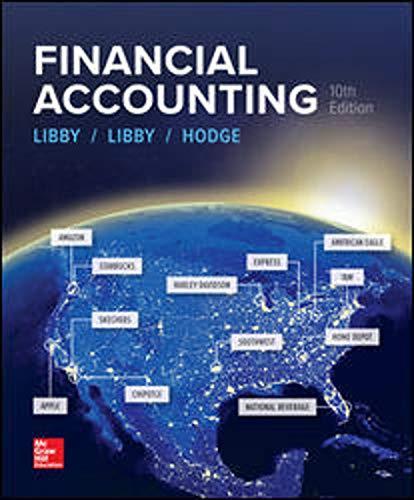
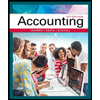 AccountingAccountingISBN:9781337272094Author:WARREN, Carl S., Reeve, James M., Duchac, Jonathan E.Publisher:Cengage Learning,
AccountingAccountingISBN:9781337272094Author:WARREN, Carl S., Reeve, James M., Duchac, Jonathan E.Publisher:Cengage Learning,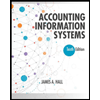 Accounting Information SystemsAccountingISBN:9781337619202Author:Hall, James A.Publisher:Cengage Learning,
Accounting Information SystemsAccountingISBN:9781337619202Author:Hall, James A.Publisher:Cengage Learning,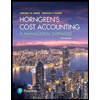 Horngren's Cost Accounting: A Managerial Emphasis...AccountingISBN:9780134475585Author:Srikant M. Datar, Madhav V. RajanPublisher:PEARSON
Horngren's Cost Accounting: A Managerial Emphasis...AccountingISBN:9780134475585Author:Srikant M. Datar, Madhav V. RajanPublisher:PEARSON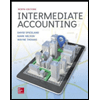 Intermediate AccountingAccountingISBN:9781259722660Author:J. David Spiceland, Mark W. Nelson, Wayne M ThomasPublisher:McGraw-Hill Education
Intermediate AccountingAccountingISBN:9781259722660Author:J. David Spiceland, Mark W. Nelson, Wayne M ThomasPublisher:McGraw-Hill Education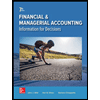 Financial and Managerial AccountingAccountingISBN:9781259726705Author:John J Wild, Ken W. Shaw, Barbara Chiappetta Fundamental Accounting PrinciplesPublisher:McGraw-Hill Education
Financial and Managerial AccountingAccountingISBN:9781259726705Author:John J Wild, Ken W. Shaw, Barbara Chiappetta Fundamental Accounting PrinciplesPublisher:McGraw-Hill Education





